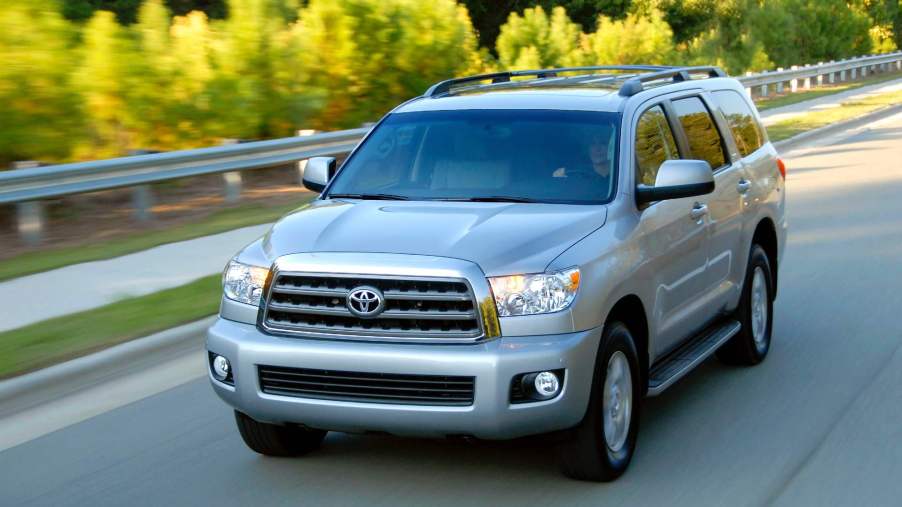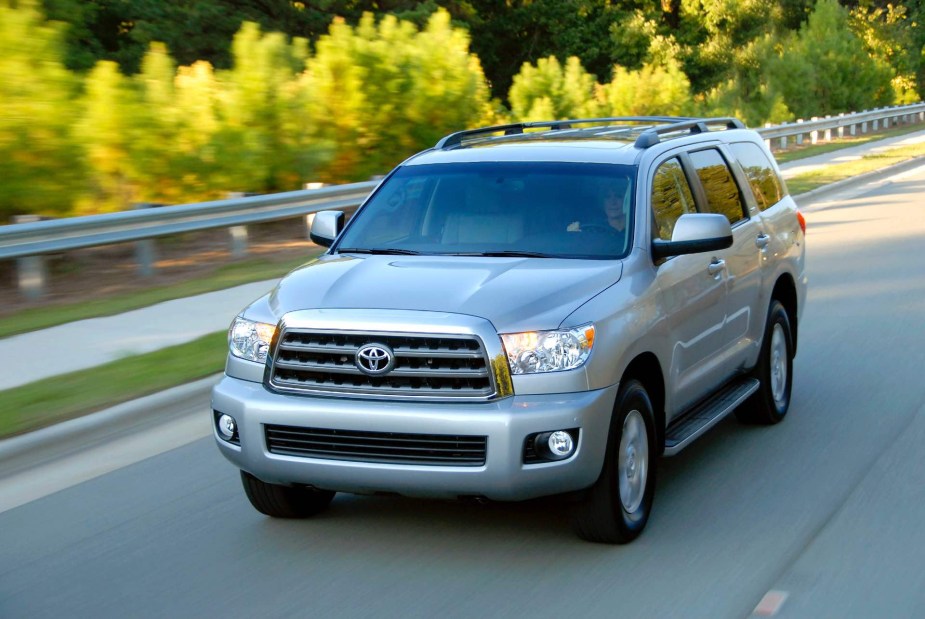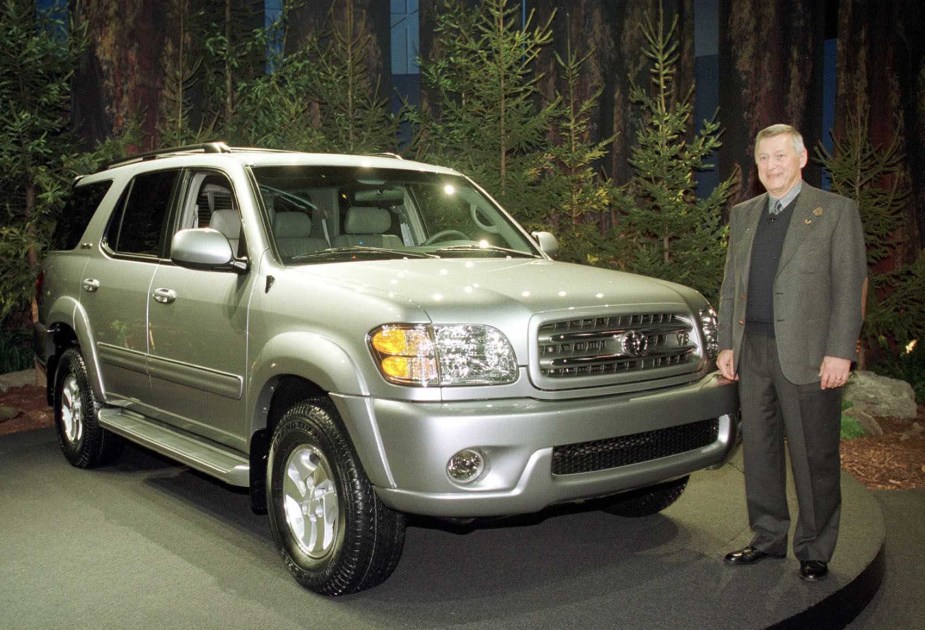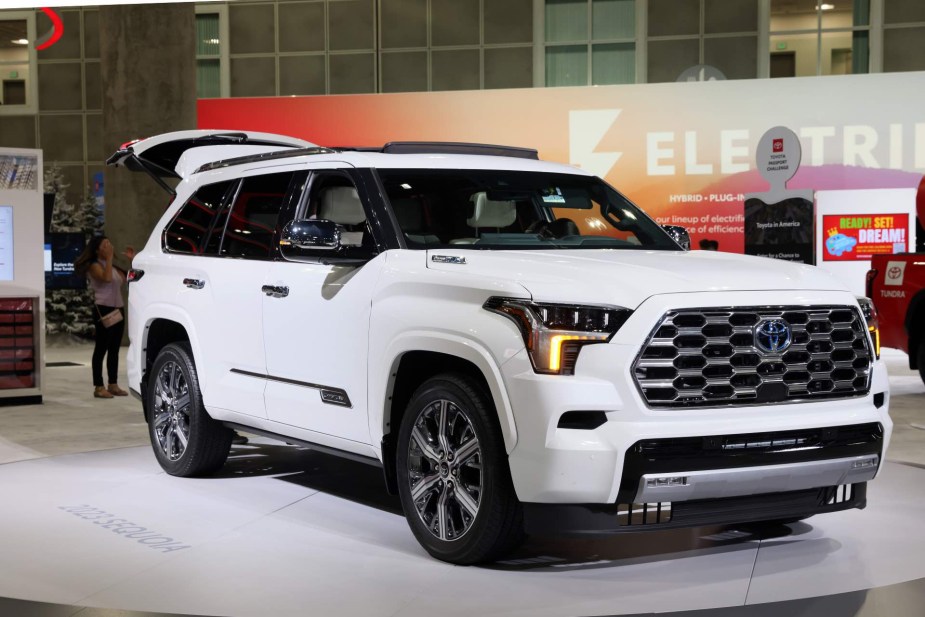
Why The First Gen Toyota Sequoia Models Are Best Avoided
The Toyota Sequoia is one of the most well-respected SUVs on the market. However, like some vehicles, this level of respect didn’t always exist for the Sequoia. In the beginning, the full-size SUV was plagued with numerous issues. Because of this, the first generation of the Toyota Sequoia should be avoided mainly by those seeking quality used SUVs. Luckily, the 2023 Toyota Sequoia helps make up for the SUV’s past.
First-generation Toyota Sequoia problems

Automakers often need time to work out the kinks with new vehicles. The First generation Toyota Sequoia is no different. According to Toyota Problems, there are at least 272 complaints about the SUV. The website also ranks it 51st out of 81 eligible Toyota generations for reliability.
The VSC traction control engaging unprovoked is a significant complaint about the early models of the Toyota Sequoia. In fact, it’s the most reported, especially for the 2001 model. It makes driving difficult, and drivers have said that it sometimes causes the vehicle to shake and become unstable. Unfortunately, Toyota never issued a recall for this issue.
Though less reported, transmission failure may be the most significant Toyota Sequoia problem. There have been numerous reports of the transmissions on the early models either ultimately going out or showing signs of failure. As most know, fixing a transmission is one of the most expensive forms of maintenance for a vehicle. According to reports, many early models experience transmission failure around the 90,000-mile mark.
Not all first-gen Toyota Sequoia models are bad

The first generation Toyota Sequoia ends with the 2007 model year. Though it should be avoided overall, the later models are significantly better. As of the 2006 model year, most complaints were regarding non-mechanical issues. The problems with these model years are with accessories and the exterior.
Of course, the last two models from the first gen Toyota Sequoia models are far from perfect. However, it should be noted that buying these models isn’t as risky as the first few. Engine problems still existed for the 2006 and 2007 Toyota Sequoia. However, the automaker had by this time found ways to fix most of these problems, which are often the most expensive to repair.
The Sequoia today

The early Toyota Sequoia models are not great used SUVs. However, Toyota found ways to significantly improve the vehicle. In fact, people consider the second-generation Toyota Sequoia to be far better than the first. Starting with the 2008 model, the Sequoia gained the reputation of being a great all-around option from Toyota.
Today, the Toyota Sequoia isn’t as popular as it once was. Unfortunately, it only sold a little over 8,000 units in 2021. This earned it a last-place ranking for full-size SUV sales for that year. Despite this, most still consider the Sequoia a great SUV, even if there isn’t as much public interest in it.
The 2023 Toyota Sequoia earned high marks from automotive critics. It has its downsides compared to other SUVs of its class, but it’s still a worthy option. The Sequoia is one of many vehicles on the market that had problems early on but eventually improved.



